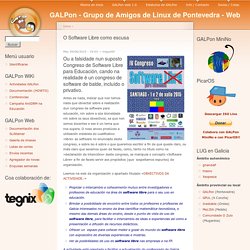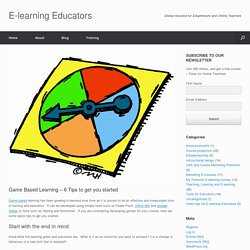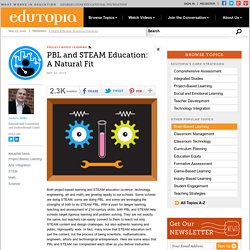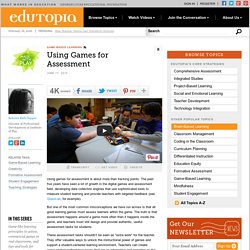

JueduLand. Juegos. Apple - ACOT2 - About ACOT2. ACOT2 has identified six design principles for the 21st century high school: Understanding of 21st Century Skills and Outcomes Establishes as a baseline that educators, students and parents must be well versed in the 21st century skills that students need to acquire to be successful.

Teachers should be able to make relevant and useful choices about when and how to teach them, and whether or not students are making progress toward their personal demonstration of accomplishment. Rethinking what we teach must come before we can rethink how we teach. Learn more » Relevant and Applied Curriculum Offers an innovative vision of what the learning environment should become by applying what we know about how people learn and adapting the best pedagogy to meet the needs of this generation of learners.
Informative Assessment A Culture of Innovation and Creativity Acknowledges the fuel that drives today’s global economy and, in turn, its importance in both student learning and the school environment. GALPon - Grupo de Amigos de Linux de Pontevedra - Web. Ou a falsidade nun suposto Congreso de Software Libre para Educación, cando na realidade é un congreso de software de balde, incluído o privativo.

Antes de nada, indicar que non temos nada que obxectar sobre a realización dun congreso de software para educación, nin sobre a súa idoneidade nin sobre os seus obxectivos, xa que non somos docentes e ese é un tema que nos supera. O noso anoxo prodúceo a utilización indebida do cualificativo «libre» ao software no enunciado deste congreso, e sobre iso é sobre o que queremos escribir a fin de que quede claro, ou máis claro que sexamos quen de facelo, como, tanto no título como na «declaración de intencións» deste congreso, se manipula o concepto «Software Libre» a fin de facelo servir aos propósitos (que sospeitamos espurios) da organización.
Leemos na web da organización o apartado titulado «OBXECTIVOS DA ACTIVIDADE.-» (Nota: as negriñas son nosas) Entrando en materia Lemos na fin da proposta: ... 3. Game-based digital learning platform. FunBrain.com - The Internet's #1 Education Site for K-8 Kids and Teachers. Game-based blended learning & classroom response system. 6 Tips for developing Game Based Learning. Game based learning has been growing in demand over time as it is proven to be an effective and measurable form of training and education.

It can be developed using simple tools such as Power Point, Office Mix and Google Slides or tools such as ISpring and Simformer. If you are considering developing games for your course, here are some quick tips to get you started. Start with the end in mind. New account. E-Adventure. Presentación Aprendizaje Basado en Juegos by Míriam González Caparrós on Prezi. Gamificación y aprendizaje basado en el juego: ¿en qué se diferencian? Handbook creative gbl es. E-Adventure. Game based learning - ICT in education - Learning and teaching. Game-Based Learning: What it is, Why it Works, and Where it's Going. Education is not the filling of a pail, but the lighting of a fire.

–William Butler Yeats Introduction Deconstruct the fun in any good game, and it becomes clear that what makes it enjoyable is the built-in learning process. To progress in a game is to learn; when we are actively engaged with a game, our minds are experiencing the pleasure of grappling with (and coming to understand) a new system. This is true whether the game is considered “entertainment” (e.g., World of Warcraft) or “serious” (e.g., an FAA-approved flight simulator). The implications of delivering game experiences for education and training are enormous. Because of good game design, more than 11 million subscribers spend an average of 23 hours per week immersed in World of Warcraft. PBL and STEAM Education: A Natural Fit. Both project-based learning and STEAM education (science, technology, engineering, art and math) are growing rapidly in our schools.

Some schools are doing STEAM, some are doing PBL, and some are leveraging the strengths of both to do STEAM PBL. With a push for deeper learning, teaching and assessment of 21st-century skills, both PBL and STEAM help schools target rigorous learning and problem solving. They are not exactly the same, but teachers can easily connect to them to teach not only STEAM content and design challenges, but also authentic learning and public, high-quality work. In fact, many know that STEAM education isn't just the content, but the process of being scientists, mathematicians, engineers, artists and technological entrepreneurs. Using Games for Assessment. Using games for assessment is about more than tracking points.

The past five years have seen a lot of growth in the digital games and assessment field, developing data collection engines that use sophisticated tools to measure student learning and provide teachers with targeted feedback (see GlassLab, for example). But one of the most common misconceptions we have run across is that all good learning games must assess learners within the game. The truth is that assessment happens around a game more often than it happens inside the game, and teachers must still design and provide authentic, useful assessment tasks for students. These assessment tasks shouldn’t be seen as "extra work" for the teacher.
They offer valuable ways to unlock the instructional power of games and support a student-centered learning environment. Here are some examples of creative ways that we’ve seen teachers use games for assessment.